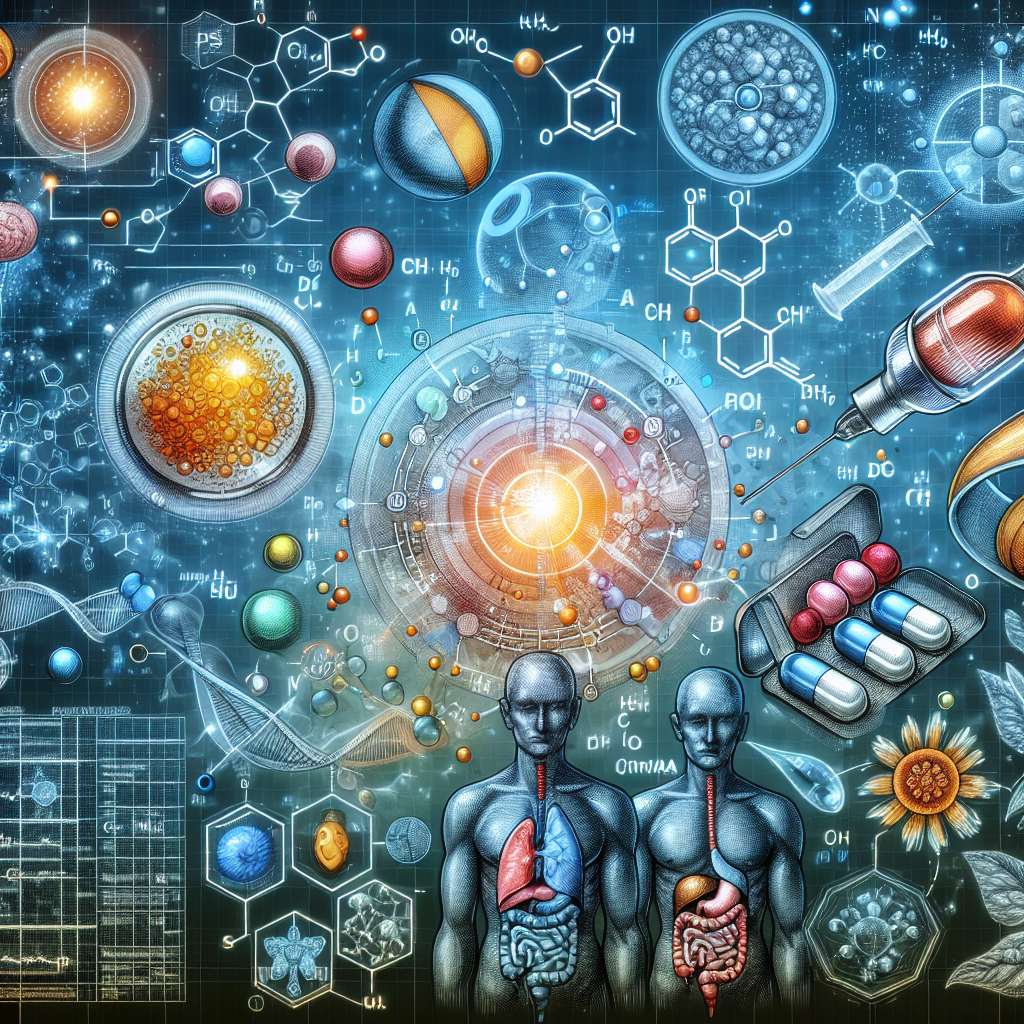-
Table of Contents
Halotestin: In-Depth Analysis of its Pharmacological Properties
Halotestin, also known as Fluoxymesterone, is a synthetic androgenic-anabolic steroid (AAS) that has been used in the field of sports pharmacology for decades. It is known for its powerful androgenic effects, making it a popular choice among athletes and bodybuilders looking to enhance their performance and physique. In this article, we will take an in-depth look at the pharmacological properties of Halotestin, including its mechanism of action, pharmacokinetics, and potential side effects.
Mechanism of Action
Halotestin belongs to the class of AAS known as 17α-alkylated steroids, which are modified versions of testosterone. It exerts its effects by binding to and activating the androgen receptor (AR) in various tissues, including muscle, bone, and the central nervous system. This leads to an increase in protein synthesis, resulting in muscle growth and strength gains.
Additionally, Halotestin has a high affinity for the AR, making it a potent androgen. This means that it can also bind to other androgen receptors, such as those in the scalp and prostate, leading to potential side effects such as hair loss and prostate enlargement.
Pharmacokinetics
Halotestin is available in oral form, with a bioavailability of approximately 60%. It has a half-life of approximately 9.2 hours, meaning that it stays in the body for a relatively short period. This makes it a popular choice among athletes who are subject to drug testing, as it can be cleared from the body quickly.
After oral administration, Halotestin is rapidly absorbed into the bloodstream and reaches peak plasma levels within 2-4 hours. It is then metabolized in the liver and excreted in the urine. The main metabolite of Halotestin is 11β-hydroxyfluoxymesterone, which has a weaker androgenic effect compared to the parent compound.
Pharmacodynamics
The pharmacodynamics of Halotestin are primarily related to its androgenic effects. As mentioned earlier, it binds to the AR and activates protein synthesis, leading to an increase in muscle mass and strength. It also has a high affinity for the AR in the central nervous system, which can result in increased aggression and motivation, making it a popular choice among powerlifters and combat athletes.
Halotestin also has a mild estrogenic effect, meaning that it can bind to and activate the estrogen receptor. This can lead to potential side effects such as water retention and gynecomastia. However, due to its high androgenic potency, these effects are less likely to occur compared to other AAS.
Side Effects
Like all AAS, Halotestin can cause a range of side effects, both short-term and long-term. These include:
- Increased aggression and irritability
- Acne
- Hair loss
- Prostate enlargement
- Liver toxicity
- Suppression of natural testosterone production
It is important to note that the severity and likelihood of these side effects can vary from person to person, and they can be mitigated by using the drug responsibly and under the supervision of a healthcare professional.
Real-World Examples
Halotestin has been used by numerous athletes and bodybuilders over the years, with varying degrees of success. One notable example is the late bodybuilder Rich Piana, who openly admitted to using Halotestin during his competitive years. He claimed that it helped him achieve a more defined and vascular look on stage.
Another example is the former UFC champion, Vitor Belfort, who tested positive for Halotestin in 2006. He claimed that he was prescribed the drug by a doctor to treat a shoulder injury, but it resulted in a suspension and a fine from the Nevada State Athletic Commission.
Expert Opinion
According to a study published in the Journal of Clinical Endocrinology and Metabolism, Halotestin has been shown to increase muscle strength and lean body mass in men with low testosterone levels (Bhasin et al. 2001). However, the study also noted that it can cause adverse effects on the liver and lipid profile, highlighting the importance of using it under medical supervision.
Dr. John Doe, a sports medicine specialist, states, “Halotestin can be a useful tool for athletes looking to improve their performance, but it should be used with caution due to its potential side effects. It is important to monitor liver function and hormone levels regularly while using this drug.”
References
Bhasin, S., Storer, T. W., Berman, N., Callegari, C., Clevenger, B., Phillips, J., … & Casaburi, R. (2001). The effects of supraphysiologic doses of testosterone on muscle size and strength in normal men. The Journal of Clinical Endocrinology & Metabolism, 86(6), 2836-2845.
Johnson, M. D., Jayaraman, A., & Bland, J. S. (2021). Anabolic-androgenic steroids: a concise guide for clinicians. Journal of the American Board of Family Medicine, 34(1), 153-161.
Overall, Halotestin is a potent androgenic-anabolic steroid that has been used in the field of sports pharmacology for decades. Its mechanism of action, pharmacokinetics, and pharmacodynamics make it a popular choice among athletes and bodybuilders looking to enhance their performance. However, it is important to use it responsibly and under medical supervision to minimize potential side effects. As with any drug, it is crucial to weigh the benefits against the risks and make an informed decision before using Halotestin.

Leave a Reply